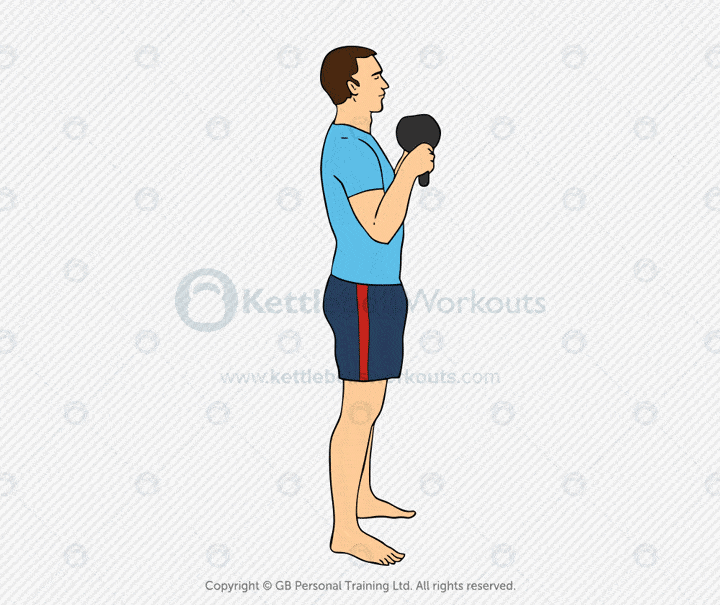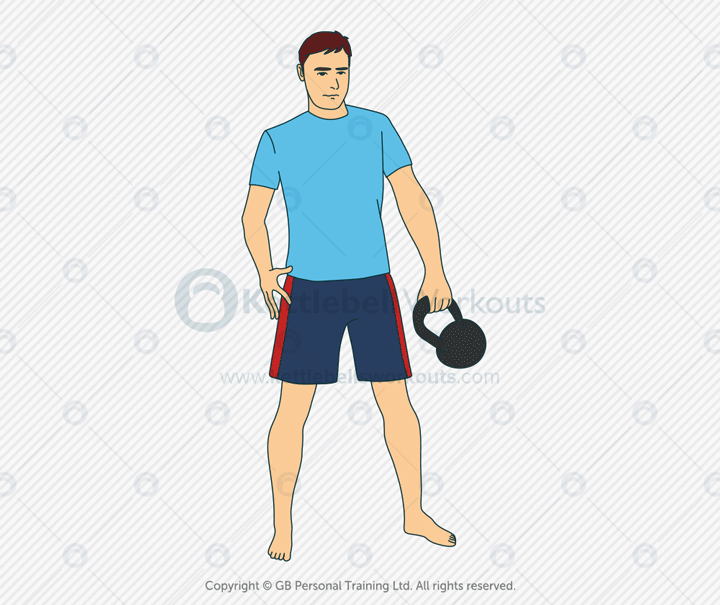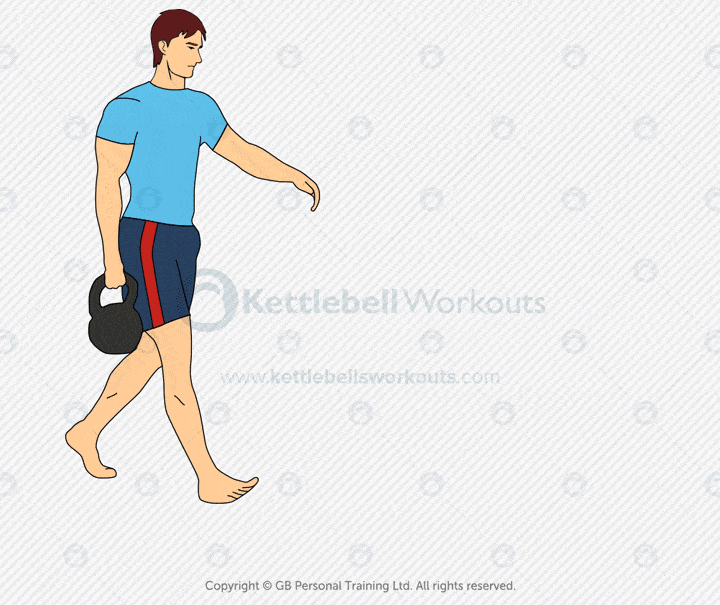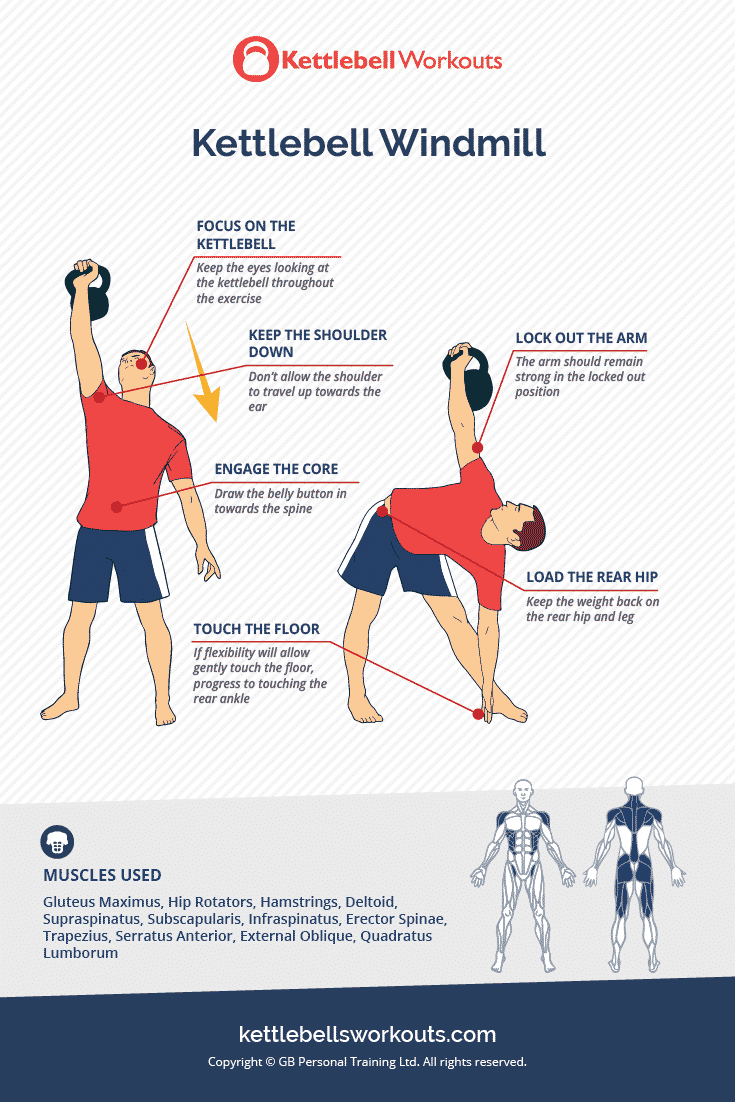Last Updated on 15 September 2025 by Greg Brookes

The kettlebell halo is a classic warm-up and mobility drill that targets the shoulder girdle, upper back, and triceps. Also known as a kettlebell head circle, this exercise is a staple in both prehab routines and kettlebell conditioning workouts.
It’s simple, effective, and suitable for all levels, whether you’re prepping for heavier lifts or working on shoulder health as a senior.
What Is the Kettlebell Halo?
The kettlebell halo involves rotating the kettlebell in a circle around your head, keeping it close to your neck and shoulders. This controlled rotation helps lubricate the shoulder joint, improve posture, and reinforce scapular stability.
You can perform halos using two primary grip variations:
- By the horns (upside down): Similar to a goblet squat hold, with the bell flipped bottom-up
- By the body (bell held upright): Grip the body of the bell and rotate it around the neck, flipping it 180 degrees at the back
Both variations have value, so experiment with what feels most comfortable for your shoulders.

Why It Matters
- Warms up the shoulder joint safely and effectively
- Improves mobility of the scapula and upper thoracic spine
- Promotes better posture and shoulder positioning
- Helps reduce risk of shoulder pain or impingement
- Ideal for active recovery, prehab, or rehabilitation sessions
Many seniors and clients with previous shoulder issues benefit from regular practice with the halo.
Muscles Worked
- Deltoids (anterior and posterior)
- Triceps
- Trapezius and rhomboids
- Rotator cuff muscles
- Core stabilisers (to keep the torso stable during rotation)
How to Do the Kettlebell Halo (Step-by-Step)
- Start in a tall standing position with feet shoulder-width apart.
- Hold the kettlebell either by the horns (upside down) or the body (upright).
- Bring the kettlebell up to chin height.
- Begin circling the kettlebell around your head, keeping your elbows in and close to the body.
- As you pass the bell behind your head, rotate it 180 degrees smoothly.
- Complete the circle in front of your face and return to the starting position.
- Repeat in one direction for a set number of reps or time, then reverse.
Tip: The closer you keep the kettlebell to your neck, the more it challenges your shoulder mobility and control.
Watch the Kettlebell Halo in Action
Common Mistakes to Avoid
- Letting the elbows flare out – keep them close to your sides
- Holding the bell too far from your head – stay compact
- Rushing the movement – maintain a slow, controlled pace
- Overarching the lower back – brace your core and stand tall
- Skipping direction changes – train both sides evenly
Warm-Up Drills to Prep for the Movement
- Arm circles and cross-body swings – 10 reps each direction
- Shoulder shrugs and scapular slides – 10 reps
- Standing wall slides – 5 slow reps
- Band pull-aparts – 10–12 reps
Programming Tips and Reps
- Reps: 5–10 each direction
- Use as: warm-up, shoulder prehab, postural correction, or part of a mobility circuit
- Tempo: Controlled and fluid—focus on joint quality, not speed
Pair With:
- Kettlebell slingshot
- Goblet squat
- Kettlebell arm bar
- Bodyweight push-up plus

When to Use This Exercise
- At the start of your workout to prime the shoulders and upper back
- In between heavy lifts for active recovery
- During rehabilitation phases to recondition shoulder control
- As a standalone drill for joint health
Kettlebell Halo Workout Examples
Workout 1
- Two-Handed Kettlebell Swing – 30 secs
- Halo – 30 secs
Repeat 5-10 times
Workout 2
- Slingshot – 30 secs
- Halo – 30 secs
- Single Handed Swing – 30 secs each side
Repeat 2-4 times
Workout 3
- Goblet Squat – 10 reps
- Halo – 10 reps
- Goblet Squat – 9 reps
- Halo – 9 reps
Repeat down to 1 rep
These routines are ideal for training the body while reinforcing proper shoulder positioning.
Coach’s Insight: Greg’s Take
I’ve used the kettlebell halo with everyone, from seniors regaining shoulder function to athletes prepping for overhead work.
What makes it so effective is the way it challenges your control around vulnerable ranges without needing much load. It’s a movement I come back to often, whether I’m warming up, cooling down, or just resetting my shoulders after a tough week.
Halo vs Slingshot
- Halo: Circles around the head, improves shoulder mobility, scapular control, and upper back activation
- Slingshot: Circles around the hips, strengthens grip, core, and full-body control
Both exercises complement each other beautifully in a full-body warm-up or flow session.

Who Should Do This Exercise?
- Anyone warming up for shoulder-dominant lifts
- Seniors needing shoulder mobility and control
- Clients recovering from shoulder injuries
- Trainers building strong postural patterns
Related Exercises You Can Try Next
- Kettlebell slingshot
- Kettlebell arm bar
- Kettlebell windmill
- Kettlebell overhead hold walk
Want More Smart Kettlebell Training?
Learn how to structure warm-ups that unlock shoulder mobility, reduce injury risk, and prepare your body for everything from presses to snatches.
Check out my full kettlebell shoulder prep and warm-up series.
Want more mobility drills like the halo? Check out the full kettlebell exercises guide to strengthen every joint.
Frequently Asked Questions
Primarily the shoulders, triceps, upper back, and stabilising muscles of the scapula. Great for mobility and posture.
Reproduce the same movement patterns you’ll use in your workout, just with lighter weight or bodyweight. Halos are ideal.
Yes. It’s one of the safest ways to restore range of motion and improve circulation to the shoulder joint.
Absolutely. Start with a light bell and stay controlled. Focus on staying close to the head and breathing through each rep.




Thank you for the reassurance! I will definitely try again in future with less weight, but also accept that some things are harder than others. Thank you for this goldmine of a website! There is so much here for everyone to learn.
Hi, I am a woman who began using an adjustable kettlebell in the summer (swing only). I have it so I can swing for ages now with about 12.5 kilos. I found this site and decided to try these exercises, but while the slingshot was fine, I can’t do the halo even at below 8 kilos! Is it important, and if so should I get the bell down to its minimum 3.6 kilos and keep trying? Thank you for any advice.
Halo’s are not for everyone Charlotte. If you find them painful then don’t do them. You can also practice them just by holding a water bottle, tennis ball etc.
Hi Greg
Thanks a lot for the effort you put into making the tutorials.
I would like to know what are your recommendations for the weight to be used for the Halo exercise specially for a beginner
Thanks
Deepak
Hello Deepak, a 12kg should be fine for beginners.
Hi Greg
Thanks
Deepak
Hi Greg,
I’ve recently started on the Women’s 12 week kettlebell exercise regimen. I’ve just finished the first week, and let me tell ya, I was sore for 2-3 days! So far, I’m enjoying the exercises and hope they will help me to tone up and loose some weight. I’ve always had a hard time staying with a program and staying motivated. Since these excercises are short, I am determined to stay with it.
I like the fact that I can refer back to the videos of you to make sure I’m doing each excersie correctly. I look forward to seeing some results at the end of the 12 series. I suppose after I’m finished, I can start the program over again. I may also purchase another more advanced program from you.
Thank you for these programs. I’m excited to get into shape!